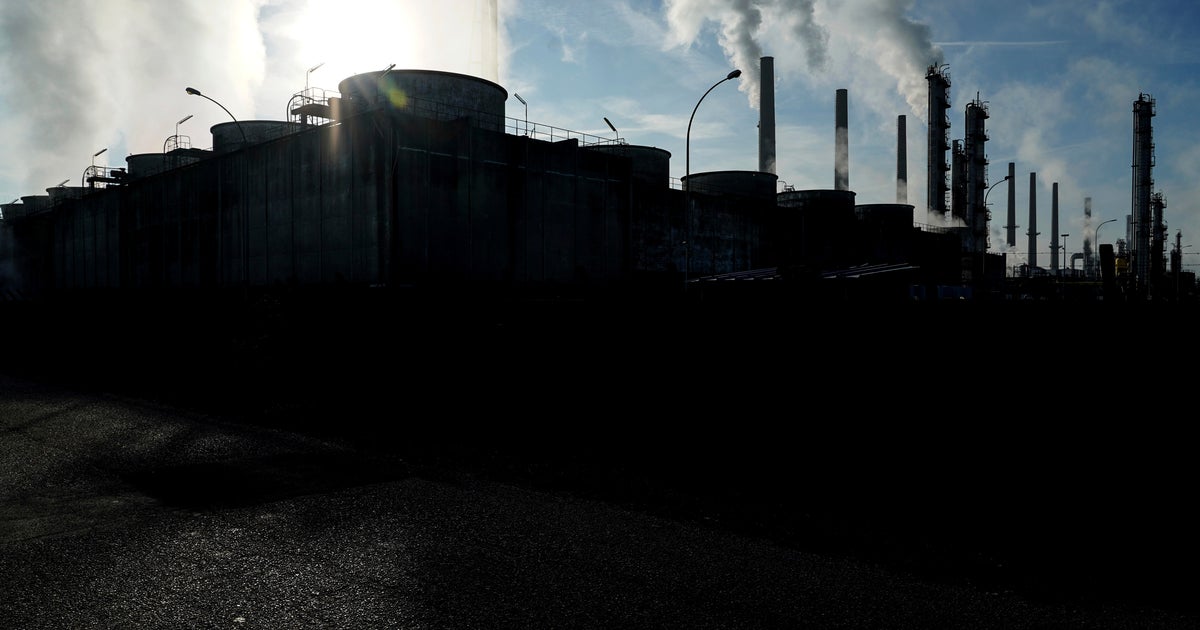U.S. still off-track for climate goals as greenhouse gas emissions rise for second straight year, new report says
Last year began with a warning that the world needs to get on track in tackling the climate crisis as average global temperatures hit a new record. It ended with yet another increase in emissions that trap that heat and add to the dramatic conditions already being felt worldwide.
U.S. greenhouse gas emissions increased for the second consecutive year in 2022, by 1.3% compared to the previous year, preliminary data published by nonpartisan research organization the Rhodium Group on Tuesday revealed. That increase isn't nearly as dramatic as the one seen in 2021, which saw a rise of 6.5% after the onset of the pandemic a year prior caused a major emissions decline, but it is still higher than 2019 pre-pandemic levels.
Of the major emitting sectors, only one saw a decline in emissions. Electric power, the nation's sector responsible for the second-most emissions, made up 28% of all U.S. emissions last year. However, its emissions were slightly lower compared to the year prior as researchers estimate coal usage declined by 8%, making up a total of only 20% of the power sector.
Meanwhile, natural gas usage increased by 2% as renewable energy usage seemed to become more popular. Solar, wind and hydropower made up an increase of 12% compared to 2021, the report found, was used to generate 22% of total electric power. That preliminary data marks "the first time in over 60 years" that renewable energy surpassed coal in the county, the report said, noting that prior to the 1960s, hydropower surpassed the generation of coal.
Nuclear energy, on the other hand, continues to constitute a smaller share of power generation in the country, going from 20% yearly from 2019 to 2021, to 19% in 2022.
That slight improvement in the power sector, however, is at least somewhat overshadowed by what's happening elsewhere.
Buildings, which encompass businesses and homes that mostly emit greenhouse gases through heating, saw the largest increase – 6% – as the Rhodium Group said 2022 saw below-average winter temperatures that forced people to consume more energy. It's also the only sector to rebound to levels seen before the pandemic, the research says.
Transportation and industry, the sectors that make up two-thirds of total U.S. emissions, saw an increase in emissions by 1.3% and 1.5%, respectively.
This preliminary report shows that while the year saw some improvement when it comes to its energy sourcing, an overall increase in emissions indicates that the U.S. "continues to fall behind" in its climate targets, the report says.
The lagging is specifically in regards to the country's Paris Climate Agreement goal of reducing greenhouse gas emissions by 50 to 52% below 2005 levels by the year 2030, an amount that would seemingly help the need to limit global warming to 1.5 degrees Celsius compared to pre-industrial levels. As part of that plan, the U.S. planned to hit between 26 and 28% below 2005 levels within the next two years. But according to the Rhodium Group's data, the U.S. is far from making that happen.
It only hit 15.5% below 2005 levels in 2022, and in fact, has yet to meet its 2020 goal of being 17% below 2005 levels.
"In order to meet the 2025 target ... the US needs to significantly increase its efforts," the report says.
Researchers noted that the Inflation Reduction Act passed last year – which invests billions into energy security and proposals that would help cut carbon emissions by 40% by 2030 – is a "significant turning point." But it might not be enough.
"More aggressive policies are needed," the report says, suggesting that there need to be "aggressive regulations" and changes among private sectors.
Even if the U.S. does manage to hit its goal, the world may not be able to limit global warming and the dangerous impacts it will have on humans everywhere to the 1.5 degrees goal.
The United Nations issued a series of reports late last year that revealed nations are failing to create and follow through on sufficient plans to reduce global warming. And similar to the U.S., greenhouse gas emissions had increased worldwide, creating a path of increasing these emissions by 10.6% by 2030.
This has resulted in "no credible pathway" to hitting 1.5 degrees Celsius of warming, but instead puts the planet on a trajectory of hitting nearly 3 degrees of warming by 2100, the agency warned.
"Under current policies, the world is headed for 2.8 degrees of global heating by the end of the century," United Nations Secretary-General António Guterres said of the reports. "In other words, we are headed for a global catastrophe."





